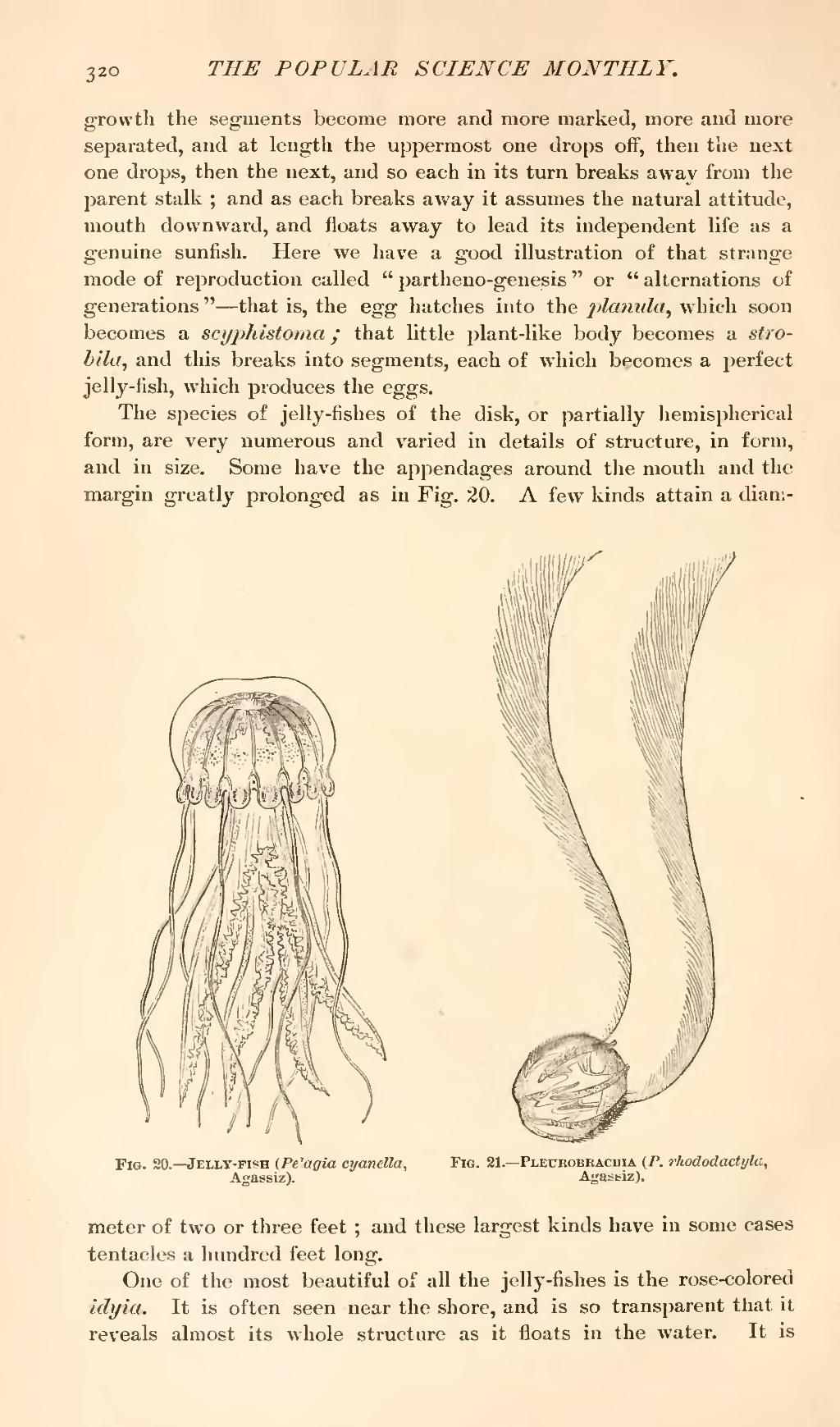growth the segments become more and more marked, more and more separated, and at length the uppermost one drops off, then the next one drops, then the next, and so each in its turn breaks away from the parent stalk; and as each breaks away it assumes the natural attitude, mouth downward, and floats away to lead its independent life as a genuine sunfish. Here we have a good illustration of that strange mode of reproduction called "parthenogenesis" or "alternations of generations"—that is, the egg hatches into the planula, which soon becomes a scyphistoma; that little plant-like body becomes a strobila, and this breaks into segments, each of which becomes a perfect jelly-fish, which produces the eggs.
The species of jelly-fishes of the disk, or partially hemispherical form, are very numerous and varied in details of structure, in form, and in size. Some have the appendages around the mouth and the margin greatly prolonged as in Fig. 20. A few kinds attain a diameter

| Fig. 20.—Jelly-fish (Pe'agia cyanella, Agassiz). | Fig. 21.—Pleurobrachia (P. rhododactyla, Agassiz). |
of two or three feet; and these largest kinds have in some cases tentacles a hundred feet long.
One of the most beautiful of all the jelly-fishes is the rose-colored idyia. It is often seen near the shore, and is so transparent that it reveals almost its whole structure as it floats in the water. It is
